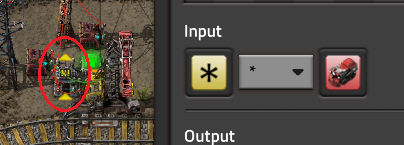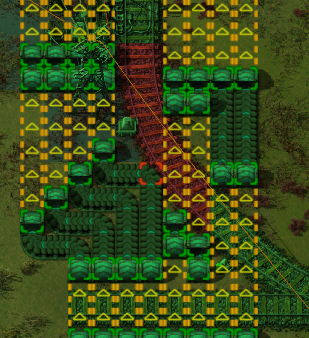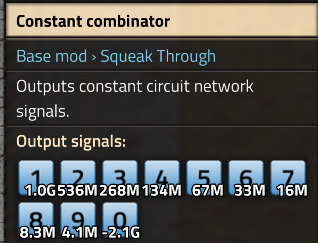AcidUK wrote: Fri Aug 28, 2020 11:54 am
wildmanal wrote: Sun Aug 09, 2020 3:50 am
Civrock wrote: Wed Jul 01, 2020 8:17 pm
I am having this same issue as well. Fuel is transported to the depot but when a train stops there it will not be fueled.
If you connect a red wire from the combinator to the power pole above it will start to load the requested fuel.
Thank you for this. It seems to load the front locomotive but not the one at the back, don't suppose you know a fix?
This is hella late, but I found this thread after I started trying to use these blueprints yesterday. I had the same issue getting the fuel to load, so I tried wildmanal's advice but then I had the same problem as AcidUK. So I decided to poke around a bit and figure it out, and post the results so every future player won't have to re-invent the blueprint designer's wheel.
 TL;DR: The correct fix for this issue is to adjust the arithmetic combinator
TL;DR: The correct fix for this issue is to adjust the arithmetic combinator -- it is already wired correctly in the blueprint, but the combinator isn't set. Change the input from "each * 0" to "each * 'Encoded positions of every locomotive' signal", as below, and be sure to remove any extra wires if you added any.

Very long explanation, hopefully useful for understanding the design: What the blueprint circuits are trying to do is only enable the inserters when a locomotive is present in a particular position, so it doesn't put fuel in your empty wagons. LTN provides a signal for this purpose, "Encoded positions of every locomotive," which is a number in what some call "binary encoded" format (which a programmer might recognize as a bit field represented as a decimal integer). The value of the signal is a number that, when converted to binary, represents the position of each locomotive as a 1 and any other wagon (or empty position) as a 0.
For example, let's take an LCC train. There are six positions in these depots, so from left to right that would be 1, 0, 0, 0, 0, 0 (remember we don't care whether the space is a wagon or empty, just if it is a loco or not). When you're figuring in binary you start from the right, so we'd write that as 000001. That's also the number 1 in decimal, so the signal would just be the number 1. An LCCCL train would be 100010 "forwards", but 010001 in proper binary notation, or the number 17 in base 10. To read the signal, let's say we see a value of 5, which is 000101 in 6-bit binary. Remembering to flip it around to go left to right, that's 101000, meaning there's a locomotive in the first and third positions.
Now that we know what this signal means, how do we get the inserters to activate at only the right positions? We have to convert that number, 5 or 17 or whatever, to a signal that tells each inserter whether it should be enabled. Because of the way that Factorio stores signal values internally, multiplying a number by specific powers of 2 and seeing whether the result is negative or positive will tell us whether a particular bit in that number is 1 or 0. This is what Optera was referring to by linking to the thread about binary decoders.
That's why the constant combinator is there -- starting with signal "0" for the first bit/position, it outputs the values of 2 raised to whatever power is needed to evaluate each bit, which the arithmetic combinator then multiplies by the value of the position signal. This gives us a set of signals on the red wires on the medium poles in the depot, where each signal from 0 through 5 is a number that is either positive or negative, depending on whether the bit value in the LTN signal is 0 or 1 in that position. This tells us whether there is a locomotive at that position in the depot. The inserter at each position can then be set to activate only if the corresponding signal is negative (less than 0).
This is why hooking up the red wire from the constant combinator directly to the medium power pole (bypassing the arithmetic combinator) will "fix" the head end of the train, but not the rear -- the numeric value needed to evaluate the first bit happens to be negative, but all the rest are positive, so if you do that you're basically "hard wiring" the first position to be on and the rest off.
Hopefully this will help everyone to diagnose any other issues with unexpected behavior at stations!


